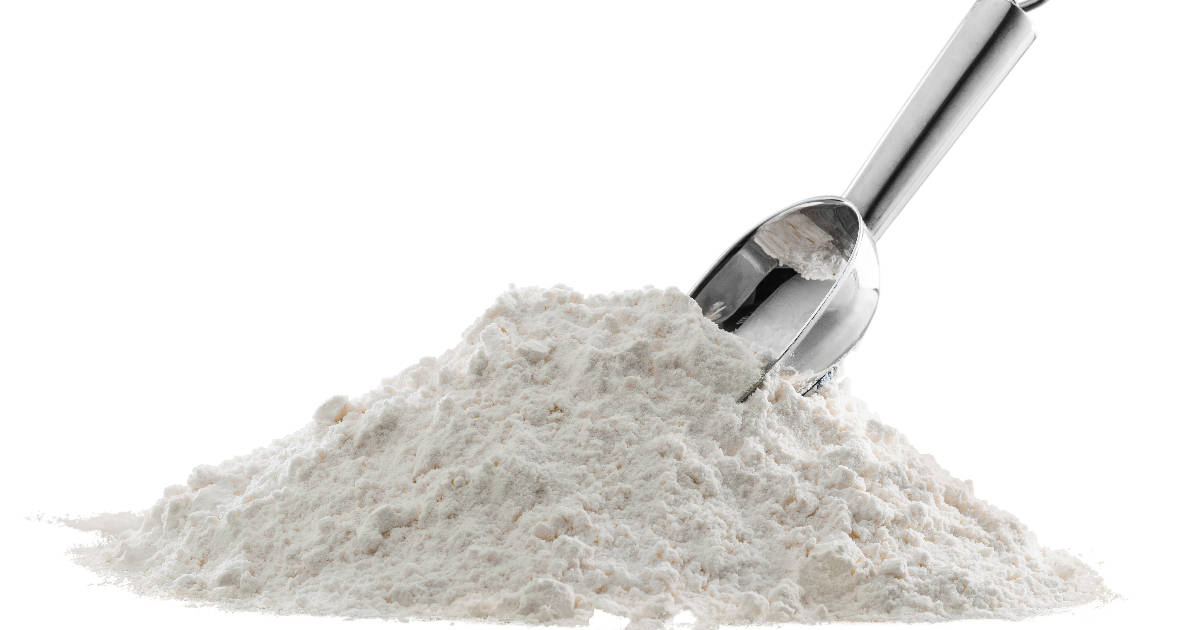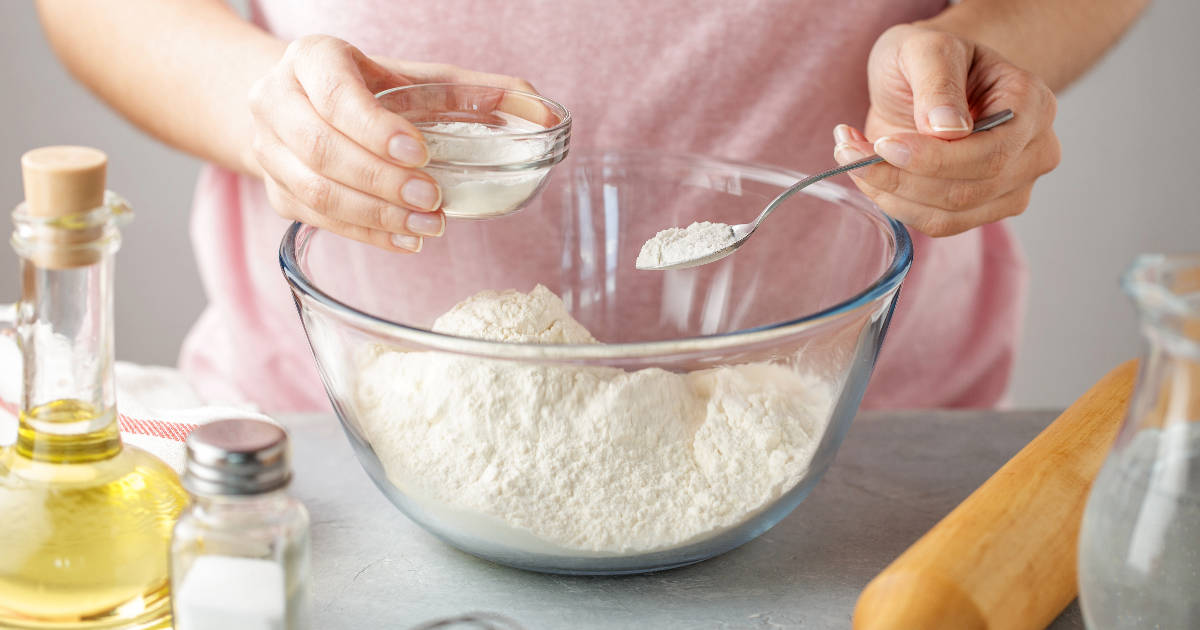Baking powder is an essential ingredient used in baking to help baked goods rise. It is a dry chemical leavening agent that releases carbon dioxide gas into batters and doughs when mixed with liquid, creating bubbles that expand and cause them to rise.

Baking powder makes baked goods light and airy with a tender crumb. Understanding how to properly use baking powder can help you achieve the best results in all your baking recipes.
How Baking Powder Works
Baking powder is made up of several components that work together to produce gas when exposed to moisture:
- A base - This is usually sodium bicarbonate (baking soda).
- An acid - The acid reacts with the base to produce carbon dioxide gas. Different types of acids are used.
- A buffer - This is usually cornstarch or potato starch that absorbs moisture and keeps the base and acid separated.
When baking powder is mixed into a batter or dough, the liquid hydrates the powder and activates the base and acid. They react together to produce carbon dioxide bubbles that expand when heated in the oven, giving rise to the baked good.
The general reaction can be summarized:
NaHCO3 (base) + H+ (acid) → Na+ + CO2 + H2O
The acid and base are kept stable and separated by the cornstarch buffer until activated by liquid and heat. This ensures the leavening action happens at the right time.
Single-Acting vs Double-Acting
There are two main types of baking powder:
- Single-acting - Uses one acid that reacts quickly at room temperature when hydrated. It must be baked immediately after mixing.
- Double-acting - Contains two acids that react at different stages. One acid reacts slowly at room temperature, while the second acid reacts during baking when heated. This allows holding batters and doughs for a short time before baking without losing rising power.
Most commercial baking powders sold today are double-acting. They provide more reliable results because there is some leavening action at room temperature during mixing and additional rising when heated in the oven.
Single-acting baking powders like homemade versions made with cream of tartar must be baked immediately before the gas escapes. Double-acting powders are preferred since the batter doesn't have to be rushed into the oven.
How Much Baking Powder to Use
As a general guideline, use:
- 1 tsp baking powder per 1 cup (125g) of flour
However, the exact amount can vary based on the recipe ingredients. More or less may be needed depending on factors like:
- Other leavening agents in the recipe like beaten egg whites or baking soda
- The moisture content of the batter or dough
- The acidity level of ingredients
Too much baking powder can give a bitter taste and cause baked goods to over-rise and then sink. It's best to start with less and increase if needed.
Accurately measuring baking powder is important since too much can ruin baked goods. Make sure to level off the teaspoon when measuring vs. scooping directly from the container.
Does Baking Powder Expire?
Baking powder has a shelf life of 6-12 months. Over time, it starts to lose potency as the chemical leavening agents degrade. Pay attention to the expiry date on the packaging.
However, baking powder can last longer if stored properly in a cool, dry place in an airtight container. High humidity causes it to react and lose strength faster.
You can test old baking powder to see if it's still good. Mix 1 tsp powder with 1/3 cup hot water - it should bubble vigorously if still potent. If not, it needs replacing.
Making Homemade Baking Powder

You can make baking powder at home with:
- 1 part baking soda
- 2 parts cream of tartar
- 1 part cornstarch (optional)
The baking soda provides the base, while the cream of tartar is the acid. The cornstarch keeps it dry and free-flowing but isn't essential.
Mix the ingredients well in an airtight container and store in a cool, dry place. Since there is only one acid, homemade baking powder is single-acting and best for quick breads and muffins baked right after mixing.
Substituting Baking Powder in Recipes
If you run out of baking powder, you can replace it with a combination of baking soda and an acid source:
- 1 tsp baking powder = 1/4 tsp baking soda + 1/2 tsp cream of tartar
Or use lemon juice, vinegar, buttermilk, or yogurt for the acid. The amount needed will vary based on the recipe.
You can also leave baking powder out of recipes for cookies and pancakes and just use baking soda instead for light leavening.
How Baking Powder Reacts with Other Ingredients
Baking Soda
Baking powder already contains baking soda. Adding more can create too much rise and cause collapse. Reduce baking powder slightly when adding baking soda.
Yeast
Yeast and baking powder work in different ways and can be combined, but the yeast may overpower the baking powder. Reduce the baking powder amount in yeast bread recipes.
Eggs
Beaten egg whites provide additional leavening. Recipes with lots of eggs may require less baking powder for the best texture.
Acidic Ingredients
Ingredients like buttermilk, yogurt, lemon juice, etc. react with baking powder so less may be required for proper rising.
Sugar
Sugar tenderizes batters. A high sugar content may need an increase in baking powder to offset the tenderizing effect.
Using Baking Powder for Best Results
Follow these tips when baking with powder:
- Store in an airtight container in a cool, dry place. Check old powder for freshness.
- Measure accurately using measuring spoons and leveling off the top.
- Sift together with flour to evenly distribute and prevent clumping.
- Mix just until blended into the batter to prevent premature leavening.
- Allow double-acting powder batters to rest before baking when possible.
- Don't overmix or knead the dough too much once the powder is added.
- Get dough and batters into pans and start baking quickly.
- Adjust the amount used based on other recipe ingredients that affect rising.
Properly using baking powder helps create light and fluffy baked goods that rise nicely without tunnels or holes. Start with recipes developed to use baking powder rather than trying to adapt yeast bread recipes. Understanding its role and how to use it gives you the power to create amazing baked treats.
Tables Comparing Different Types of Baking Powder
Single-Acting vs. Double-Acting Baking Powders
| Single-Acting | Double-Acting | |
|---|---|---|
| Reaction stages | One acid that reacts quickly at room temperature | Two acids that react slowly at room temp, then again when heated |
| Baking | Must be baked immediately after mixing | Can be held briefly before baking |
| Examples | Cream of tartar homemade baking powder | Commercial baking powders |
Common Acids Used in Baking Powder
| Acid | Reaction Rate | Notes |
|---|---|---|
| Cream of Tartar | Fast acting | Made from winemaking byproduct |
| Monocalcium Phosphate | Moderate rate | Found in Rumford & Dr. Oetker brands |
| Sodium Aluminum Sulfate | Slow acting | Used in some double-acting powders |
| Sodium Acid Pyrophosphate | Very slow | Cheap acid can impart a bitter taste |
FAQ
Does baking powder go bad?
Yes, baking powder has a 6-12 month shelf life and will lose its leavening power over time, especially if not stored properly. Always check old baking powder to see if it still bubbles when mixed with hot water.
Can baking powder be substituted for baking soda?
No, they cannot be substituted for each other. Baking soda needs an acid to activate it while baking powder already contains its own acid.
Is baking powder gluten-free?
Yes, baking powder itself does not contain gluten. However, some brands may have trace gluten contamination from manufacturing. Check labels if avoiding gluten.
Why do you have to sift baking powder with flour?
Sifting evenly distributes the baking powder throughout the flour so it doesn't clump. This helps it dissolve and react properly when liquid is added.
Can too much baking powder make you sick?
Baking powder is non-toxic, though unpleasant to eat on its own. Consuming extremely excessive amounts could potentially cause stomach upset or irritation.
Conclusion
Baking powder is a staple ingredient in baking that gives lift and lightness to cakes, muffins, biscuits, pancakes, and more. It produces carbon dioxide gas through an acid-base reaction when exposed to moisture, creating bubbles that make batters and doughs rise.
Using the right amount of fresh baking powder can ensure your baked goods come out fluffy and tender. Understanding single vs. double-acting, how to measure properly, ideal storage, and substitutions allows you to fully utilize baking powder for bakery-quality results right from your own oven.

